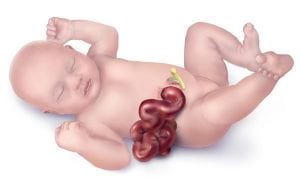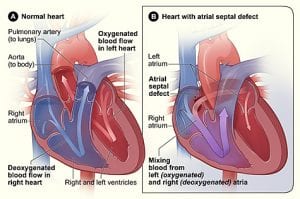

Image credit: Centers for Disease Control and Prevention, National Center on Birth Defects and Developmental Disabilities
Want to hear about the latest clinical summaries via ObG Insider?
CDC: Facts about Gastroschisis
Gastroschisis and associated defects: an international study
Review of Abdominal Wall Defects
Prenatal Risk Factors and Outcomes in Gastroschisis: A Meta-Analysis
Gastroschisis: antenatal sonographic predictors of adverse neonatal outcome
Influence of location of delivery on outcome in neonates with gastroschisis
Maternal-Fetal Medicine Specialist Locator-SMFM


Image credit – National Heart Lung and Blood Institute (NIH)
ASD is typically sporadic, however may occur as an isolated finding in families or as part of various genetic syndromes including but not limited to Down syndrome, DiGeorge syndrome and Holt-Oram syndrome which involves variable radial ray anomalies.
AHA Circulation Journal -Atrial Septal Defects in the Adult
CDC: Facts about Atrial Septal Defect
ACOG Practice Bulletin No. 162: Prenatal Diagnostic Testing for Genetic Disorders
Please log in to ObGFirst to access this page